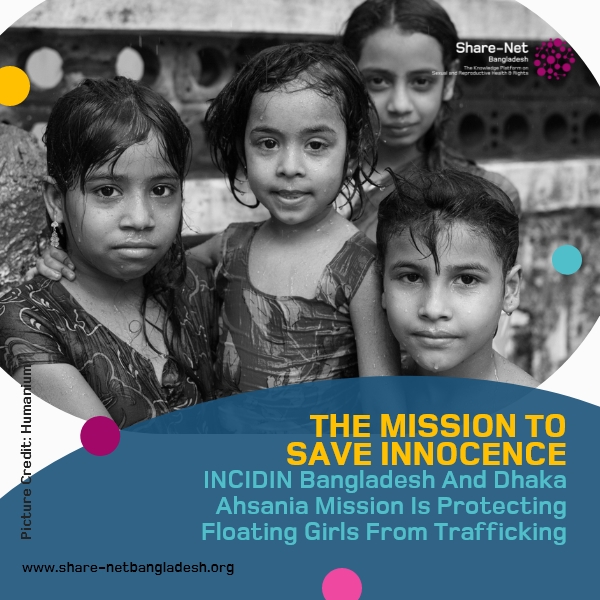The Mission to Save Innocence: INCIDIN Bangladesh and Dhaka Ahsania Mission Is Protecting Floating Girls From Trafficking
“Children are our future, and we must protect them from all forms of violence,” said a child rights activist. In Bangladesh, an alarming number of floating children, particularly girls, live in big cities under unsafe conditions. These children are highly vulnerable to gender-based violence (GBV), including trafficking, due to their precarious living situations on streets, and at rail and bus stations.
Recent cases highlight the severity of this issue. Three young girls, aged 10, 9, and 8, narrowly escaped being trafficked to India. Their traffickers abandoned them at Moulvibazar district rail station when they saw police nearby. Rescued by local authorities, the girls revealed they had been living at Kamalapur Railway Station in Dhaka with their mothers, facing daily risks of exploitation and violence.
Organizations like INCIDIN Bangladesh and Dhaka Ahsania Mission (DAM) are stepping in to protect these vulnerable children. INCIDIN Bangladesh, known for its child rights-based approach, operates Drop-in-Centres (DICs) in Dhaka, providing temporary shelter and essential services to floating children. The organization quickly responded when police informed them about the rescued girls, eventually reuniting them with their mothers. Recognizing the ongoing risks, INCIDIN Bangladesh referred the girls to a more secure shelter home operated by DAM. Here, they are safe and receive necessities like shelter, food, clothing, education, and life-skill training.
The plight of floating girl children is not just a matter of immediate safety but also a significant public health concern, particularly regarding sexual and reproductive health and rights (SRHR). These children often lack access to basic healthcare and education, increasing their vulnerability to GBV and limiting their future opportunities. Ensuring their safety and access to SRHR services is crucial for their well-being and development, aligning with the Sustainable Development Goals (SDGs) of gender equality, quality education, and good health and well-being.
Rights activists emphasize the need for comprehensive measures to protect these children. This includes creating safe living conditions, providing education and healthcare, and addressing the root causes of their vulnerability, such as poverty and family breakdown. By doing so, Bangladesh can make significant strides towards achieving its SDG commitments and securing a better future for its children.
The case of the three rescued girls underscores the importance of collaborative efforts between government authorities, non-governmental organizations, and the community. It highlights the urgent need for policies and programs that prioritize the protection of floating children, particularly girls, from all forms of violence and exploitation. Only by ensuring their safety and rights can we hope to nurture the next generation and build a society that upholds the dignity and potential of every child.
Source: The Daily Observer
Picture Credit: Humanium

